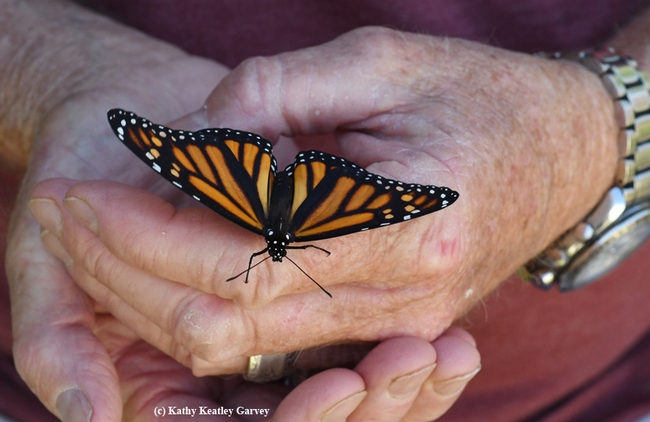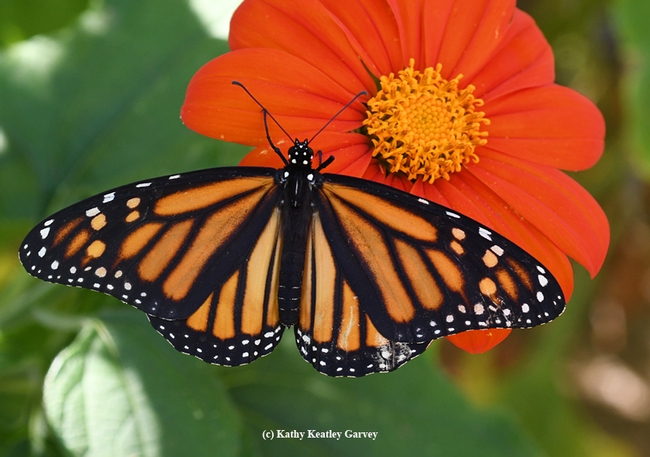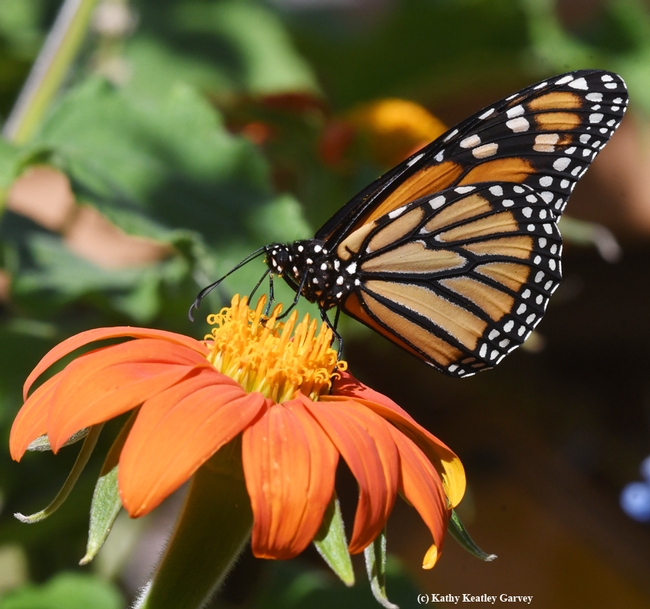It's Halloween and scores of trick-or-treaters are donning monarch butterfly costumes.
But they can't do justice to the living monarchs, those iconic, majestic butterflies that are always dressed in Halloween colors: black and orange.
It's always a treat to see them but they have to avoid the "tricks"--predators and parasitoids.
Among the last monarchs we reared in September: a brightly colored female, healthy and strong and rarin' to go.
Where is she now, on Halloween? Is she overwintering in Santa Cruz or Pacific Grove? Or, did a predator, perhaps a California scrub jay or a praying mantis, nail her?
We don't known "witch" way she went, but as she fluttered away, we wished her "Safe travels!"
It's been a troubling year for monarchs, Danaus plexippus, according to butterfly guru Art Shapiro, UC Davis distinguished professor of evolution and ecology, who maintains a research website, Art's Butterfly World. "I have not seen a wild egg or caterpillar of the monarch this entire calendar year at low elevations," he said Sept. 6, 2018 during an interview on the "Insight with Beth Ruyak" program, Capital Public Radio, Sacramento. "Not one." (Listen to the interview.)
Where to see the overwintering monarchs in California?
They've been found at more than 400 sites along the California coast, according to the Xerces Society for Invertebrate Conservation. "The mild winters of the California coast are a perfect haven from the harsh cold weather found in our country's interior," Xerces says on its website. "Monarchs take advantage of this climate and often use the same overwintering sites year after year. Congregations of overwintering monarchs have been found at more than 400 sites along the California coast, from Mendocino County in the north to San Diego in the south. For many people, the arrival of autumn along the California coast is marked by the flutter of orange and black as monarchs arrive at these groves and settle in for the winter."
"The last few years have witnessed low numbers of butterflies throughout the region compared to the late 1990s, but there are still many places to view overwintering monarchs and get involved!"
Check out the Xerces' map showing monarch overwintering sites in California.
Attached Images:

A newly eclosed monarch, ready to take flight. This image was taken on Sept. 24, 2018 in Vacaville, Calif. (Photo by Kathy Keatley Garvey)

Spreading her wings on a Mexican sunflower (Tithonia), the newly released Monarch is about to take flight. (Photo by Kathy Keatley Garvey)

A monarch sips nectar from a Mexican sunflower (Tithonia). (Photo by Kathy Keatley Garvey)